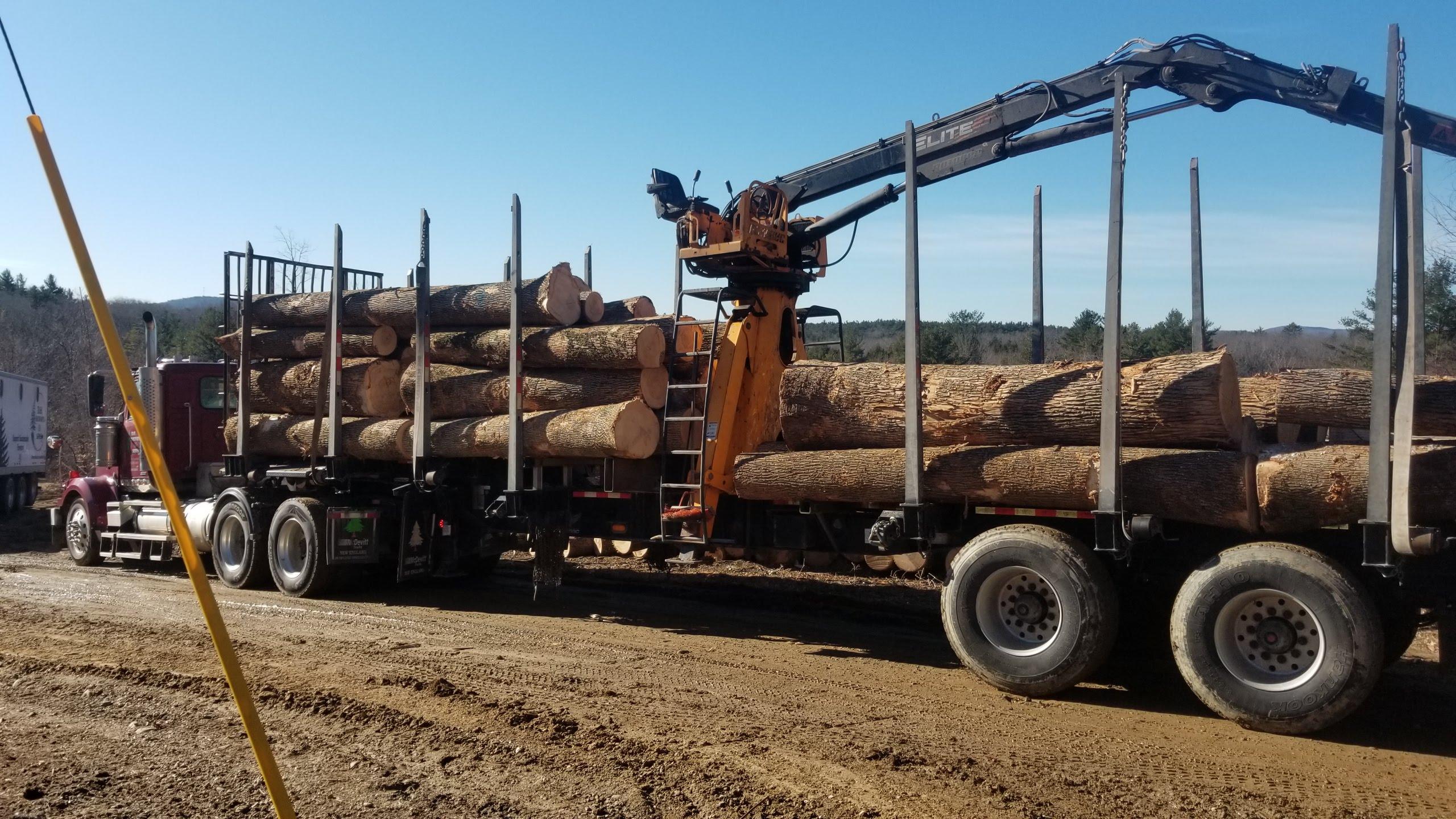- Tags:
- Working Forests

Last year the Forest Society harvested more than 2 million board feet of high value saw log timber (pictured above). We also harvested 25,000 tons of low grade wood.
At an October conference in Concord, the future of wood as a desirable structural framework for construction of large commercial buildings was presented as an economically competitive and carbon friendly alternative to structural steel and concrete. New manufacturing technologies for cross lamination of wood (so called “mass timber” or “cross laminated timber”) use wood from trees smaller than those graded as marketable saw logs to fabricate strong structural beams.
Mark Rivard, a structural engineer from WoodWorks, explained how current building codes in the United States are an impediment to the design and development of commercial buildings using mass timber. Codes currently limit wood framed structures to six stories or 85 feet. Much taller mass timber structures are being built today in Canada and Norway. The American Wood Council is leading an effort to amend current building codes in the US to be more accommodating to mass timber commercial buildings. Rivard also discussed the growth of manufacturing of mass timbers in North America.
Alan Organschi, an architect at Gray Organschi Architecture in New Haven, CT, and also a faculty member at the Yale University School of Architecture, focuses his architectural practice and teaching on the benefits of wood in building design and construction. At the October conference he presented a compelling argument for using wood to frame modern buildings for its climate benefits. He observed that buildings are responsible for 49% of all CO2 emissions in the US (in their construction and operation). Also, today, US forests take up 11 percent of all US man-made carbon emissions. He explained that every dry ton of timber used has removed more than 1.5 tons of carbon dioxide from the atmosphere. Sequestering this CO2 by using wood for the construction of large buildings (instead of steel or concrete) has significant climate benefits. And manufacturing mass timbers emits very little CO2 when compared to the manufacturing processes to make steel and concrete.
The University of Maine’s Advanced Structures and Composites Center is currently conducting research into mass timber design and manufacturing.
